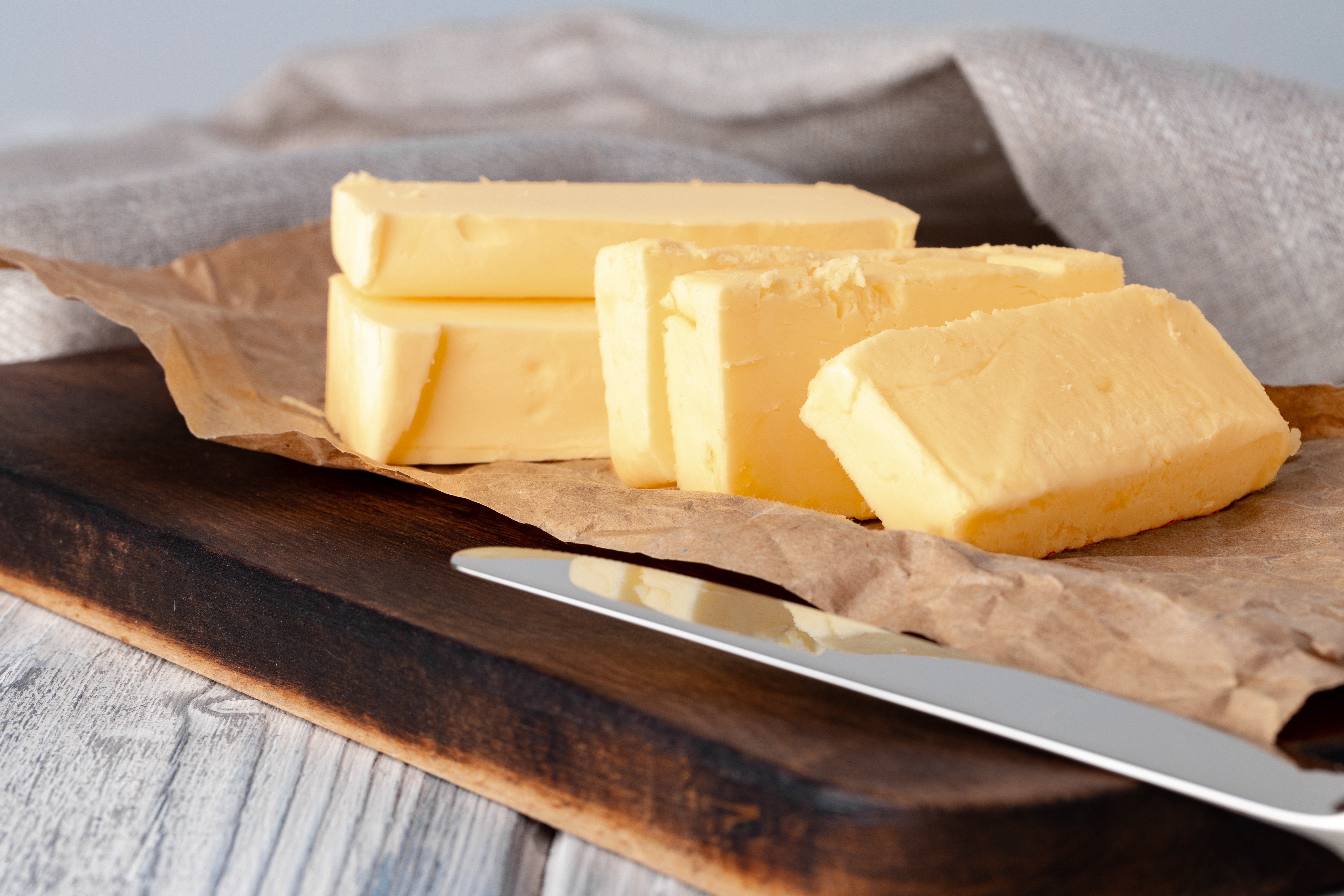Butter
Butter is a dairy product made from whole cow's milk. Butter's milk fat percentage (M.F.%) should be at least 80%. The other 20% is milk solids (curd), and water. The rich fattiness of fresh cow's milk is churned ...20L of whole milk is required to make 1 kg of butter (Butter Through the Ages). Butter is a "must have" in any classical kitchen. It is used in sauces, soups, garnishing and finishing dishes, baking and pastry.
Butter is used as a cooking fat, it adds moisture and shine, and it adds flavour and mouth feel (texture).
Butter is a saturated fat and is therefore solid at room temperature as opposed to plant-based oils which are liquid at room temperature. It is considered an "unhealthy fat" for that reason--it also solidifies in your arteries and is not heart healthy.

History
Fernand Point, the Father of modern French cuisine, is famously known for being adamant about using plenty of butter in his cooking. He would say "Du Beurre! Donnez-moi du beurre! Toujours du beurre!", meaning "Butter! Give me butter! Always butter!"
Other "Butters"
A Note on Margarine
Margarine is a substitute for butter. Margarine (trans fatty acid is also solid at room temperature, however it is made from plant oils that have been hydrogenated (hydrogen H molecule was added during a chemical process). Because of that processing and denaturing of otherwise a healthy plant-based fat, margarine is a trans fat. Margarine was invented in the late 1800's and took off in popularity after the World Wars. It was economical and seen as a good substitute for butter.
Nut Butters
Nut butters like peanut butter or cashew butter most likely do not contain any butter. Nuts have high fat content and when roasted and puréed they become a creamy, spreadable texture like regular butter.
Ways To Cook
It's impossible to get through culinary school without butter! Compound butter, hollandaise, monter au beurre, roux, beurre blanc, beurre manié, beurre noisette, clarified butter, buttercream...and the list goes on.
When cooking with butter do not use high heat. The smoke point is around 300⁰F whereas the smoke point of canola oil as close to 400⁰F. If you want to use butter for higher heat cooking methods like sautéing, use clarified butter or ghee. (Or a vegetable oil.) Rather, butter is used to finish dishes, coat foods, make them shiny and moist.
Butter combined with flour makes a roux. When applied at the end of cooking (a sauce or stew for example) then the same mixture of butter and flour is called beurre manié. Cold whole butter cubes can be whisked in to a hot sauce at the end to mount the sauce or mounter au beurre.
In cold preparations, compound butter can be used as a bread liner and moisture barrier or whipped and served with things like bread.
Types of butter include:
- unsalted butter (used a lot in baking and pastries)
- salted butter (salt has been added for flavour of savoury dishes and to prolong the shelf-life of the butter)
- cultured butter (slightly acidic or tangy, fresh butter taste)
- European-style butter (which is richer because of the higher fat content)
- clarified butter (made by cooking the milk solids and evaporating the water).
More on Butter
Some of our favourite videos
Alberta Butter Producers
Lakeside Farmstead
About this producerFoothills Creamery
About this producerFoods from this producer:
